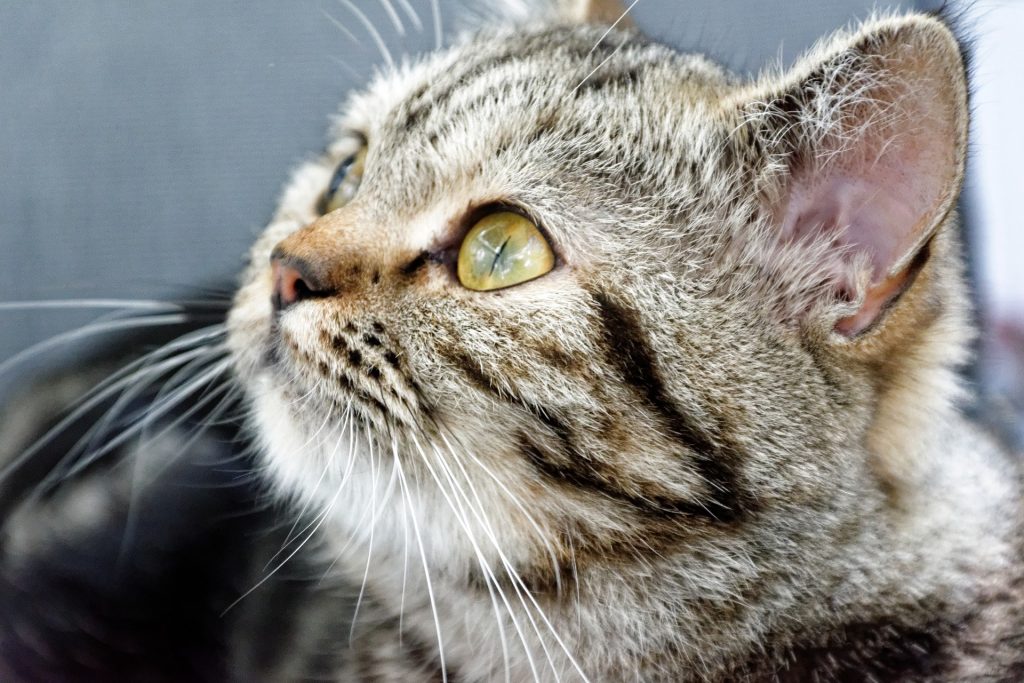If you notice that your cat’s skin is irritated, red, inflamed, itchy or crusting, he may be suffering from a skin rash, otherwise referred to as Feline Dermatitis. Whether your kitty is an indoor or an outdoor cat, he is a natural explorer who encounters a variety of different hazards and substances on a daily basis.
When a cat’s skin comes in contact with a potentially harmful bacteria, the immune system kicks in, sending defender cells to the point of contact. This can cause inflammation, which ultimately leads to an allergic reaction and maybe even an infection. If addressed in the early stages, cat skin rashes are highly treatable and not an immediate source for panic.
But it should be noted that prompt treatment of your cat’s skin infection is crucial towards recovery.
Types of Skin Rashes Found in Cats
There are two types of skin rashes in felines:
Irritant Skin Rash
The more common of the two types, irritant dermatitis occurs when the skin comes in contact with a highly irritating substance for the first time and immediately has a reaction.

Allergic Skin Rash
If a cat encounters a previously harmless substance for a second time, his skin may become sensitized and overreact in defense. Sensitization occurs approximately six months to two years after the first encounter. For example, your cat successfully uses a medicine, but six months later his immune system has developed a hypersensitivity to the drug and an allergic reaction occurs, resulting in irritated skin.
Note: This rarely occurs in cats under 2 years of age.
Causes of Skin Rashes in Cats
There are a wide range of causes, which can make it tough to identify the source. However, eradicating the source is very important in order to prevent recurrence and long-term pain in your cat. Typical causes of irritant skin rashes in cats include:
- Detergents
- Fertilizers
- Cleaning products
- Topical medications
- Road salt
- Poison Ivy
- Chemicals
- Plastic
- Perfumes
Causes of allergic skin rashes in cats include:
- Insect Bites
- Parasites or infestations (e.g., fleas, mites)
- Food allergies
- Extreme weather conditions
- Biting or scratching
- Medications
- Bacteria or fungus
Symptoms of Cat Skin Rashes
If your cat has a form of contact dermatitis, you will mostly likely notice inflammation and redness on the thin parts of his fur where the skin is most exposed (e.g., belly, toes, chin, anus, ears and mouth).
It can be a highly uncomfortable experience for your cat — he may be prone to excessive licking, scratching and itching, which can lead to a secondary bacterial infection. Thus, it’s important to take care of any infection in the early stages. Other symptoms include:
- Rubbing against the floor to alleviate itching
- Hair loss and damaged follicles
- Blisters
- Skin ulcers
- Oozing lesions
- Thickening of skin
- Slight odor
- Papules
- Dandruff
When irritants are the cause, the symptoms should manifest within 24-48 hours. If the irritant is promptly removed, then recovery usually occurs immediately following the initial exposure.
When allergies are the cause of dermatitis, symptoms will be observable within three to five days after exposure, and may last for weeks.
If you notice any of these symptoms, be sure to visit your veterinarian immediately to receive a proper diagnosis and treatment plan.
Treating Feline Skin Rashes

Your vet’s diagnosis will usually begin with ruling out external parasites and any other sources that may be causing a hypersensitive reaction.
The most effective treatment is identifying and removing the substance that is triggering the skin rash. However, sometimes it’s tough even for a vet to determine the exact source. Communication between vet and owner is key towards isolating the harmful substance. Thus, it’s recommended you pay a lot of attention to your kitty’s behavior and be aware of any changes in his environment (e.g., new furniture, textiles, cat collar, food, etc.).
In order to track down the cause of your cat’s skin rash, your vet may have you administer a patch test, where a patch containing the suspected substance is taped to the skin. The skin’s reaction is then monitored. Another similar method involves removing the cat from his normal environment and seeing whether the affected skin improves.
Once a diagnosis is made, typical treatment involves bathing your cat with a medicinal shampoo to remove any harmful bacteria, and a regimen of topical corticosteroids to repair the irritated skin.




